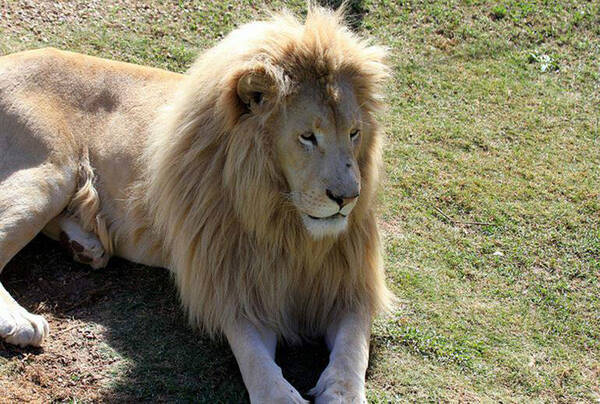Panthera leo azandicus
IUCN
LCBasic Information
Scientific classification
- name:Panthera leo azandicus
- Scientific Name:Panthera leo azandicus,Northeastern Congo Lion,lion
- Outline:Carnivora
- Family:Schizopoda Felidae Panthera
Vital signs
- length:1.5-2m
- Weight:130-220kg
- lifetime:20-25years
Feature
The body color is light gray, yellow or brown, with strong limbs and wide claws.
Distribution and Habitat
It is mainly distributed in the northeastern Democratic Republic of the Congo, the Uele River region and the eastern provinces; parts of Uganda and the southeastern Central African Republic, including the western part of some areas in southern Sudan. It used to exist in Rwanda.
The distribution area of the Congo lion is located between the subtropical regions of the southern hemisphere, but there are differences between regions. Most areas such as the north have a tropical savanna climate, the south has a subtropical climate, and the high-altitude areas in the central and eastern parts have a temperate climate.
Appearance
Male Congo lions can weigh up to 170-220 kg, and female lions can weigh about 130-160 kg, which is roughly equivalent to 2/3 of male lions. Congo lions have short hair and body colors of light gray, yellow or brown. The difference is that male lions also have long manes, which are light brown, dark brown, black, etc. The long manes extend all the way to the shoulders and chest. The lion has a large head, a wide face, a long nose bone, and a black nose. The lion's ears are relatively short and round. The ears of the lioness are like a short semicircle. The limbs of the Congo lion are strong, and their claws are also very wide. The lion's tail is relatively long, with a tuft of dark long hair at the end.
Large body, uniform body, medium-length limbs, toe-walking. The head is large and round, the snout is short, and the vision, hearing, and smell are all well developed. The lion has a huge head, a wide face, a long nose bone, and a black nose. The ears are relatively short an
Details
Congo lion (scientific name: Panthera leo azandicus) is called Northeastern Congo Lion in foreign language. It is a subspecies of lion.

Congo lions usually live in groups, with a lion group of about 8 to 30 members, with an average of 17. It often includes several generations of lionesses, at least one adult male lion and some growing lion cubs. Lionesses form the core of the lion group and rarely leave the place where they were born. The lion group contains 2 adult male lions, but there is definitely only one leader. Adult male lions often do not stay with the lion group. They have to wander around the territory all year round to defend the entire territory. Generally, they can be the leader of the lion group for a few months to a few years, depending on whether they are capable enough to defeat foreign male lions.
A lion group usually consists of 4-12 related lionesses, their children and 1 to 2 male lions. These male lions are often also related, such as brothers. The size of the lion group depends on the habitat conditions and the amount of prey. Lion groups in East Africa tend to be larger because there is plenty of food there.
Lions will try to avoid encounters with other lions, and male lions mark their territories by roaring and smelling urine. They usually roar before hunting in the evening and before waking up at dawn to start activities. The territories of lions vary in size, and the boundaries are divided by excrement. Sometimes the territories of adjacent lions overlap. The territories of African lions often intersect with those of spotted hyenas, leopards and other beasts, and competition is inevitable. Leopards, wild dogs and other beasts are in a suppressive position in the territory, and spotted hyenas with a numerical advantage sometimes challenge and kill female lions that are at a disadvantage in number.
In lion groups, female lions are the main hunters. Lionesses often hunt in groups, with members of the pride spreading out to form a fan-shaped circle around a group of prey, encircling the prey in the middle, and then approaching from all directions. Lions prey on a wide range of prey, often killing African buffalo, gazelles, and giraffes, but they prefer to hunt medium-sized to large ungulates, such as zebras, impalas, and other types of antelope.
The gestation period of a lioness is generally 100-119 days, and there may be 1-6 cubs each time (usually 2-4). When the cubs are just born, they have ochre spots on their bodies, especially on their abdomens and legs. The cubs begin to try to eat meat when they are four weeks old, usually semi-digested meat that their mothers vomit back to them. When they grow to 6 or 7 months old, they are basically weaned, and the spots on their bodies gradually disappear. Cubs usually grow up with their mothers until they are about 2 years old, at which time male subadults face the severe problem of independence. To reach sexual maturity, females have to grow to 2-3 years old, and males have to be 5-6 years old.
The biggest natural enemy of lions is modern humans. Hunting and habitat loss have put all African lion subspecies at risk of survival. African lions also face the trouble of disease. Infectious diseases that break out on the grasslands can kill tens of thousands of animals in a short period of time, such as tuberculosis and feline AIDS (FIV).
Listed in the 2008 Red List of Endangered Species of the World Conservation Union (IUCN) ver3.1 - Vulnerable (VU).
Protect wild animals and stop eating game.
Maintaining ecological balance is everyone's responsibility!








